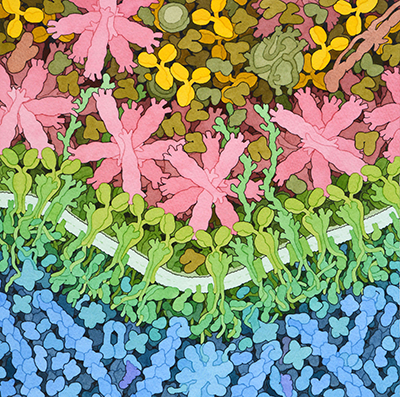Molecular Landscapes by David S. Goodsell
Influenza Vaccine, 2019
Acknowledgement: David S. Goodsell, RCSB Protein Data Bank. doi: 10.2210/rcsb_pdb/goodsell-gallery-020
This painting is part of “VAX,” a series of paintings exploring the molecular basis of vaccines. These paintings are designed to be accurate representations of the biological processes, but they also serve as a personal celebration of a miracle of modern medicine. The painting shows a modern recombinant vaccine (in red) created by biotechnology from the viral hemagglutinin in the process of binding to B-cell receptors (green) on the surface of a B-cell. This will ultimately lead to production of antiviral antibodies.




